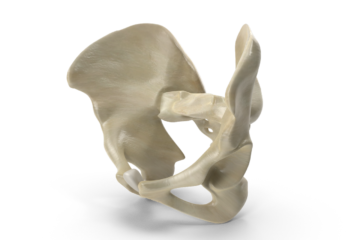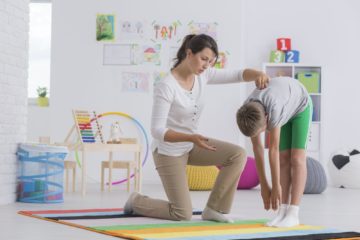Have you heard the expression “Sitting is the new smoking” yet? You can search the web and easily find numerous articles and statistics to show that sitting isn’t the best for you. It’s been linked to a number of medical problems such as obesity, diabetes, heart disease, and overall shorter lifespans.
Although being active can reduce the health risks associated with prolonged sitting, it doesn’t completely remove the damage it can cause.
An increasing number of employers are taking a proactive approach by providing their employees with alternatives to the standard office desk setup. Standing desks, and even treadmill desks, are becoming more commonplace.
In some cases, alternatives aren’t available – such as in the middle of a pandemic, trying to work from home and doing your best with what you have available.
You might also decide that a standing desk isn’t quite right for you or if you simply have to sit.
How exactly should you be sitting?

How complicated can sitting be?
Sitting is a bit of an art. Some people aren’t even capable of sitting properly, despite considering themselves to be healthy able individuals.
Your body might not be ready for proper posture. It may be showing signs of adaptive muscle shortening as a results of prolonged sitting and requires stretching. It may also need stronger support muscles to help maintain those postures without compensatory effort and possible repetitive strain type injuries.
How should I sit at my desk?
Go through the following checklist, and see where you’re possibly letting yourself down.
- Your eyes should be level with the top of your computer monitor. This is easier with desktop PCs, but a struggle with laptops where the keyboard and screen are fixed close together.
- Perhaps you can use your laptop as the computer monitor and raise it by placing a box or a few books underneath. Then add an external keyboard.
- Your shoulders should be relaxed and low, not high and hunched up. You should not feel like you’re lifting your shoulders.
- Your lower arms should be parallel to the floor. They should rest on an armrest, rather than being held up.
- You shouldn’t be reaching too far for your keyboard and mouse. You should be able to control them easily with arms bent at the elbow and supported by the arm rest.
- The use of a keyboard tray comes in handy. Consider looking on amazon for one that can just be clipped on the front of your desk or kitchen table without making modifications to the actual surface.
- Your feet should be flat on the floor. Just putting your toes on the floor isn’t enough!
- Your upper back should be straight. Your lower back has a natural curve that should be supported by your chair.
- You shouldn’t slouch in your chair. Your hips should be as close to the back of the chair as possible.
- Your upper legs should be at a 90° angle from your body. If you’re short, this may mean that you need a footrest. If you’re particularly tall, you’ll need a higher chair (and may also require a higher desk).
- You should be sitting up straight and your screen should be a full arm’s length away from you.
- You shouldn’t be leaning to one side. It can be tempting to rest on one arm, but this causes your spine to curve.
- Consider when was the last time you had your eyes checked. If your eyes are straining to maintain focus on the screen, your neck muscles will step in and compensate by shifting the position of the head to regain focus. This can lead to head aches, neck tension, jaw issues, shoulder pain and so on.
Do I need to stay completely still?
It’s actually recommended that you change position at least every 30 minutes.
Unfortunately, shifting and shuffling usually leads to a slumped and uncomfortable posture. Unless you’re working hard to maintain a good sitting position, you’re likely to start to slouch down.
Instead of trying to find multiple good positions to sit in, take the opportunity to have a quick walk every 30 minutes. It can be as simple as standing up and go get a drink, take a toilet break or just walk up and down the hallway. Then sit back in your ‘good posture’ position and restart your timer. You should also aim to take your lunch break away from your desk and perhaps take the dog out for walk if you’re working from home. You will find that the more you move the better you concentrate.


